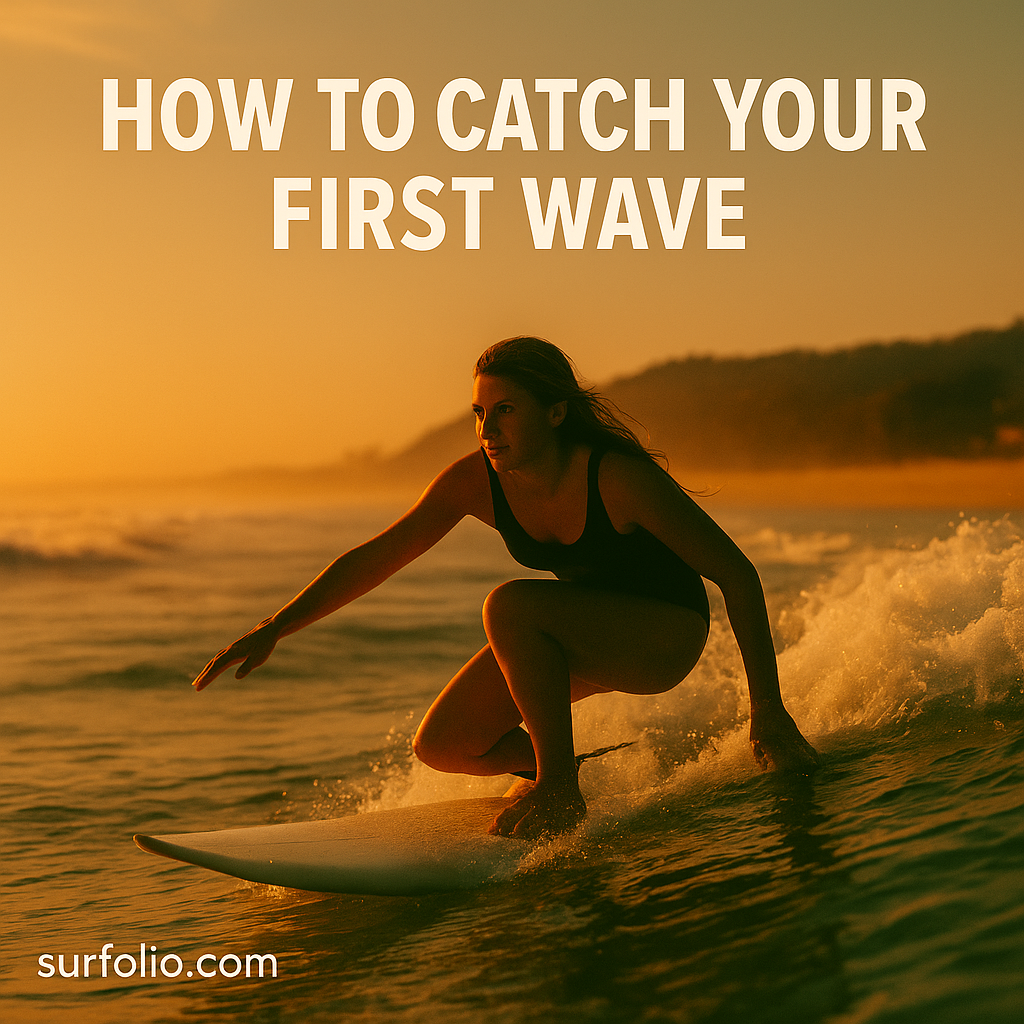
The Thrill of Your First Ride
Catching your first wave is one of the most unforgettable moments in surfing. It’s the instant when the ocean lifts you, momentum takes over, and you glide toward shore — a pure rush that every surfer remembers. But before that magic happens, it’s all about preparation, patience, and learning to work with the wave, not against it.
Whether you’re surfing whitewater at a beach break or catching your first green wave, understanding the fundamentals will help you progress faster and have more fun in the lineup.
1. Choose the Right Spot
Start somewhere with gentle, rolling waves and a sandy bottom. Beach breaks are perfect for beginners since the waves are softer and more forgiving. Avoid crowded or advanced surf zones.
Great beginner-friendly conditions:
- Small waves (1–3 feet)
- Light or no wind
- Consistent whitewater or mellow reforms
2. Pick the Right Board
Your board is your foundation. Beginners should choose a soft-top longboard or foam board (8–9 feet long). These boards offer:
- More stability and buoyancy
- Easier paddling
- Safer wipeouts
As you gain confidence, you can transition to smaller boards.
3. Practice on the Sand First
Before paddling out, spend a few minutes practicing your pop-up (standing up) on the beach.
How to Practice:
- Lie flat on your board, feet together, hands near your ribs.
- Push up with your arms while sliding your front foot between your hands.
- Keep your knees slightly bent and your weight centered.
- Eyes forward — never look down!
Rehearsing this motion helps you develop muscle memory and confidence.
4. Paddle Out with Awareness
Once you’re in the water, paddle out past the whitewater to the inside zone where waves are reforming. Keep your body centered on the board and your strokes deep and steady.
Pro Tip:
If waves are breaking toward you, use a turtle roll (longboard) or duck dive (shortboard) to get through the whitewater safely.
5. Timing Is Everything
The most common mistake new surfers make is paddling too early or too late. To catch a wave, you need to match its speed as it approaches.
Steps for Perfect Timing:
- Watch the waves and pick one that’s smooth and not closing out.
- Turn your board toward shore before the wave reaches you.
- Start paddling before it arrives — strong, fast, and consistent strokes.
- As you feel the wave lift the tail of your board, give two extra powerful paddles.
- When you feel the forward push, pop up smoothly into your stance.
6. The Pop-Up
Once you feel the wave pick you up, it’s time for the moment of truth!
Step-by-Step Pop-Up:
- Place your hands flat beside your chest.
- Push up your upper body, keeping your hips low.
- Slide your front foot under your chest and plant it near the center of the board.
- Lift your back foot and find your balance.
- Bend your knees and stay relaxed — your arms help you balance.
Common Mistakes to Avoid:
- Jumping too early before the wave catches you.
- Looking down instead of ahead.
- Standing too tall and stiff.
7. Ride It Out
Once you’re up, stay low and centered over the board. Use your knees for balance and look in the direction you want to go — your board will follow your eyes and shoulders.
Enjoy the glide, even if it’s short. Every second standing up is a win, and with time, those seconds will stretch into full rides.
8. Respect the Ocean and Other Surfers
Even as a beginner, surf etiquette matters. Always look around before paddling for a wave to avoid collisions, and never drop in on someone already riding.
9. Keep Practicing
The ocean changes every day, and every session teaches you something new. Don’t get discouraged — even seasoned surfers wipe out regularly. The more time you spend in the water, the faster you’ll progress.
Quick Tips for Progress:
- Go with a friend or instructor for safety and guidance.
- Watch surf videos to learn technique and positioning.
- Stretch before and after sessions to stay limber.
Final Thoughts
Catching your first wave isn’t about perfection — it’s about connection. The ocean rewards patience, practice, and respect. Once you feel that first push of energy under your board, you’ll understand why surfers chase that feeling for life.
